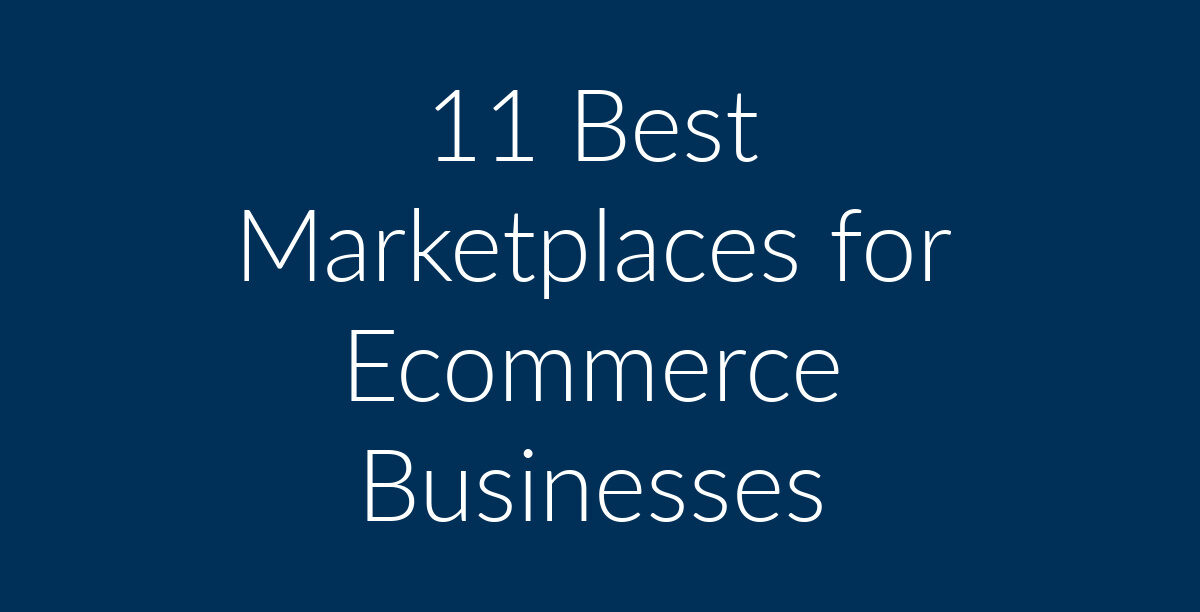It’s time to get your business on the map, and what better way to do it than with a top-notch digital marketing agency like Planet Marketing!
What are the best eCommerce marketplaces for the year 2021? Hi, my name is Francisco and I am the owner of Planet Marketing, a Digital Marketing Agency. My company specializes in Google Ads, Facebook Ads and Remarketing. If you need information on the best eCommerce platforms for your business, then you have come to the right place. In this article, I am going to show you the best marketplaces for online businesses in the year 2021. This post is divided into the following sections;
- Definition of online marketplaces.
- Why bother with online marketplaces?
- Strategies for success while selling on online marketplaces.
- 11 best marketplaces for eCommerce businesses
What are Online Marketplaces?
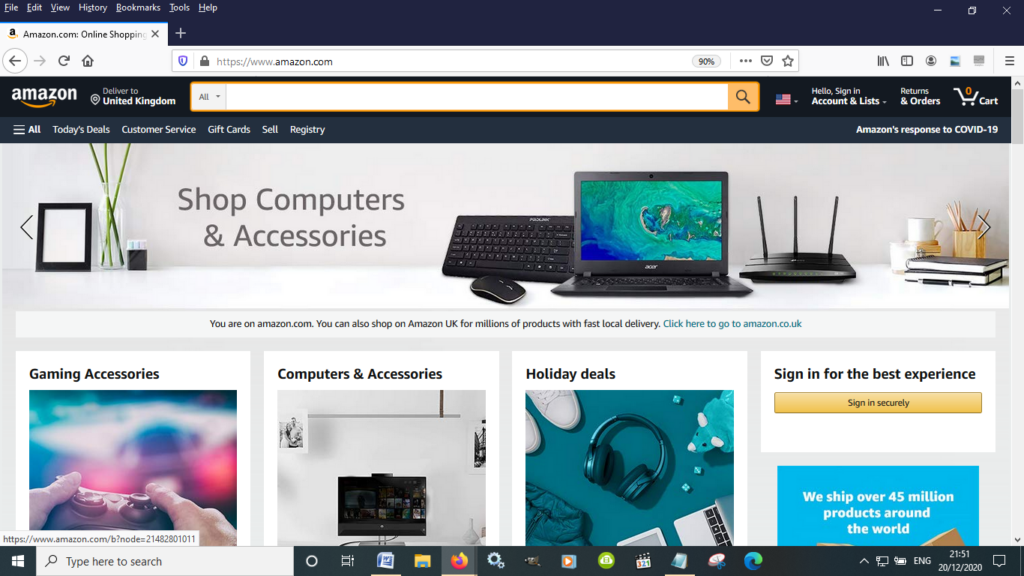
Amazon is a good example of an online marketplace
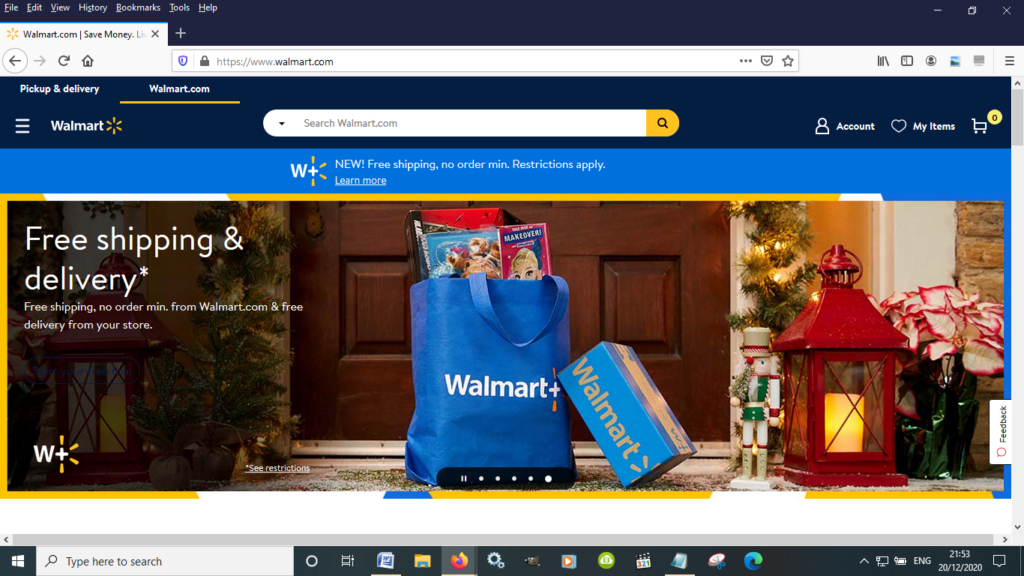
Walmart is another good example of an online marketplace
Chances are high that you already have a good idea what we are talking about here. Everybody has come across Amazon, eBay and Walmart.com. Those are well known examples on online marketplaces on which businesses can sell their products. There are a lot more of these platforms.
Simply put, an online marketplace is a platform on which different sellers sell different goods. These sellers may be in one country or they could be spread across the world. It depends on how a particular platform operates. Transactions are handled by the marketplace and not by individual sellers.
How does this differ from selling on your own website?
Most eCommerce businesses start with the creation of websites on which they sell their products and services. These sites are made using Shopify, Magento or any of the other popular eCommerce software that’s out there.
The difference with an online marketplace is that on your site, you will be the only seller, while online marketplaces have an unlimited number of sellers. As an example, Amazon currently has over 2.5 million sellers active on the platform.
Another difference is that on your own eCommerce site, you will be handling transactions. I have already noted that for online marketplaces, the marketplace is the one that handles all transactions.
Why bother selling on an online marketplace?
You are already selling your products and services on your own website, so why should you bother also listing your business on an online marketplace? Well, there are several reasons why taking this step tends to be the most logical option for businesses around the world;
- Online marketplaces already have a massive number of users. That’s something with which you are going to have difficulty competing. Just to put things into perspective, over 500 million people visit Amazon, Walmart and eBay every year. So, will you be able to compete with that if you are a small business? Well, probably not.
- A lot of these people get to these marketplaces directly. That’s significant. It means millions of people are no longer bothering with Google or any of the other search engines that are out there when making product searches. They go directly to Amazon or to eBay and they make their searches there. So, if you are not listing your products on these marketplace, you will be missing out on a lot of potential customers.
Strategies for Success on Online Marketplaces
So, you have decided to list your eCommerce business on one or more of the online marketplaces that we are talking about in this article. But that’s no guarantee of success. In fact, if you don’t do things right, you will be sorely disappointed.
Truth of the matter is, there are probably millions of other people selling the same product on these marketplaces. And a lot of them will already be well established. So, if you are just arriving, you truly have your work cut out for you.
Fortunately, there are some things that you can do to achieve the kind of success that you are looking for;
1. Carry out keyword research
What are people who are looking for your products typing into the search boxes on Amazon, Google, eBay and so on? That’s one of the first questions that you need to ask yourself when listing your goods on these platforms.
Keyword research is important in this regard. It tells you the proper terms to use when listing your product. If people are looking for a “super bright flashlight,” then that’s a term that you need to use when listing a product in that category.

Keyword research helps you come up with the best product descriptions
These keywords are not only in product descriptions. They also need to appear in product titles and in tags. The idea is to show that you have the most relevant product to meet a potential buyer’s needs.
If they are looking for a “super bright flashlight,” and your listing only shows that you are selling an “flashlight,” then they probably won’t buy.
They will think your product is not what they are looking for. If you go to Amazon today, you will notice that sellers go to great lengths to cover all the angles as far as potential keywords for their products are concerned.
That’s something that you should consider doing. List all your potential keywords and try to include as many as possible in your product titles and descriptions.
2. Offer free shipping
Free shipping tends to be a major draw for people when it comes to online shopping. It’s unavailability is one of the biggest reasons behind abandoned carts. If you are able to do so, then you should by all mean offer free shipping. That’s one good way of undercutting the competition.
However, free shipping does tend to come with some drawbacks. As an example, businesses can only offer free shipping via regular delivery services. These are slower. So, you may lose out on some people who are looking to receive their goods faster.
3. Have multiple shipping options
One way of overcoming the problem given above is by offering multiple shipping options. That way, free shipping becomes simply one of the options. Your customers can opt to pay to have their goods delivered at a faster pace.
The issue of shipping tends to be a challenge for eCommerce businesses. It’s one aspect that can severely undercut your profit margins. You are essentially restricted in terms of what you can charge when selling on an online marketplace.
These restrictions stem from the issue of competition that we have already mentioned. You always need to keep an eye on what the competition is charging for the same goods. And if your competitors are offering free shipping then you will be forced to go down that route as well.
Having other options is a good way of clawing back some of the losses that you may be making by offering free shipping. If you go to Amazon or eBay, you will see that a lot of seller there have various shipping options, including UPS, FedEX and USPS. Offer all these options and other to your buyers. Let them choose what they want depending on how much they are going to be willing to pay for faster shipping.
4. Offer faster dispatch times
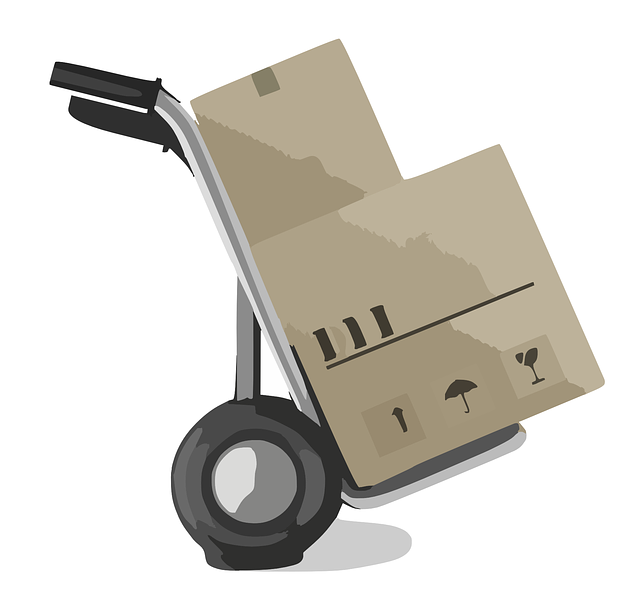
Offering faster shipping can help you stay ahead of the pack
You will have noticed by now that shipping tends to be a dominant factor when it comes to success on online marketplaces. The moment that somebody makes a purchase, they become impatient for the product to be dispatched from the seller.
One way of achieving success when selling on online marketplaces is by offering faster dispatch times. These then translate into faster shipping times because the product will arrive faster if you send it out immediately after a customer has made a purchase.
5. Advertise your products
We have already noted that on most online marketplaces, you will be competing with thousands of other sellers. Many of these will be selling similar or related products. So, how do you stand out from within the pack?
Well, one way of doing so is by advertising. If you go to Amazon today, you will notice that there are some seller who advertise their products so that they appear at the top of search result. By doing this, you give yourself a chance to be discovered by your potential customers.
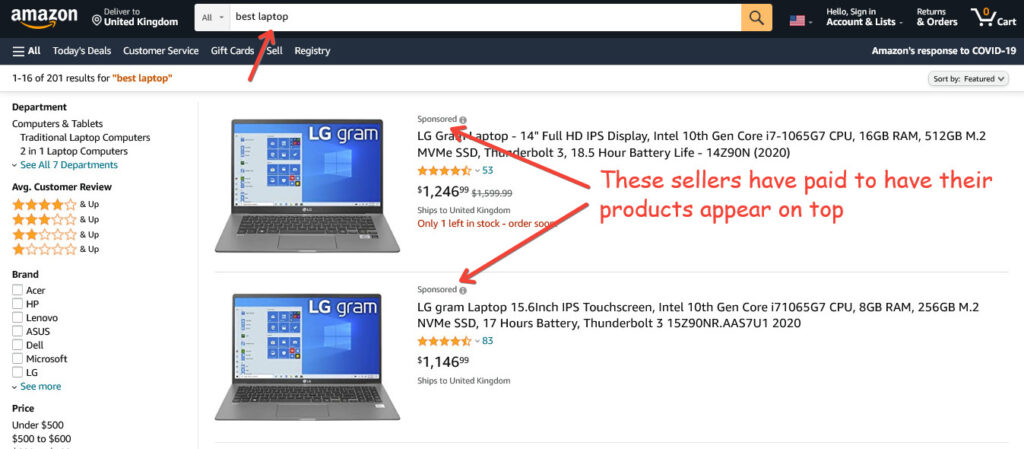
Advertise to appear on top of search results
If you need some hard facts, then consider that seller who take out ads on Amazon grow 63% faster than those who simply list their products without doing advertising.
6. Strive to remain profitable
The competition, as already noted, can be rather cutthroat. So cutthroat that it’s sometimes not profitable to sell on one marketplace or the other. Remember there are other fees that you will have to handle.
These include the commissions and transaction fees that are charged by these platforms. Factor all these overheads into your expenses and calculate whether or not makes sense for you to sell on a particular platform.
In most cases, transaction fees tend to be a major determinant when it comes to choosing where you are going to sell your goods.
Best Online Marketplaces for eCommerce Businesses
That’s how to achieve success when selling on online marketplaces. But what are the best online marketplaces for eCommerce businesses? And what is it that makes each of these marketplaces a major draw? The following are the 11 best marketplaces for eCommerce sites;
1. Amazon

Amazon is one of the best marketplaces for eCommerce in the world
Amazon is one of the world’s biggest online marketplace. It’s the biggest marketplace in the United States. So, if you really want to go where it matters, then this is one marketplace on which you need to be. Amazon has a lot of things going for it;
- Amazon gets over 200 million visitors every month. That’s a massive number.
- There are over 5 million sellers on Amazon.
- Amazon sells over $280.5 billion worth of products per year.
- We have already noted that 56% of product searches are made directly on Amazon. They don’t come from Google or any other search engine.
- Amazon runs a subscription service called Amazon Prime. This has over 100 million members. Amazon prime members are known to be high spending. On average, they each spend about $1 400 per year. That makes Amazon one of the best online marketplaces for ecommerce businesses. It’s the place to be if you wish to expand your business.
- You can also take advantage of the Fulfillment by Amazon (FBA) program to give your products prominenceover those from the competition. FBA shipping is handled by Amazon. This reduces your costs as a seller. All your goods are stored in Amazon warehouses and they are packed and shipped from there. It’s one way in which you can benefit from Amazon’s brand recognition. People trust the brand, and you can extend this trust to your brand.
- You can run ads on Amazon, putting your products ahead of the competition.
Who is Amazon for?
Amazon works well for medium to large businesses. These are the types of business that will be better placed to expand in response to the expected influx of customers.
How to sell on Amazon
To sell on Amazon, there are a number of things that you need to do;
- Create a seller account
- Choose a plan
- Upload your products
- Start selling
- Optionally, you can start promoting your products.
Amazon fees
The fees that you pay when selling on Amazon depend on the selling plan that you have opted for. There are two plans, one for individual sellers and another for professional sellers. The following are the fees;
Individual sellers
- No monthly subscription fees
- USD$ 0.99 per item that you sell
- Closing fees that vary depending on the category in which your products fall
Professional Sellers
- $39.99 monthly subscription fees
- Referral fees. These vary depending on the product category.
- Closing fees that vary by category.
2. eBay

eBay is another great eCommerce platform on which you can sell your products
eBay is another of the best marketplaces for eCommerce businesses. It’s a major player trailing behind Amazon. eBay currently has over 182 million buyers around the world. Each year, over $95 billion worth of goods are sold on this marketplace. And eBay’s reach spans the globe. It has 190 markets around the world.
How to get started on eBay
eBay is one of the best marketplaces for eCommerce sites, but how do you get started selling on the platform? There are 2 basic steps to getting started on eBay. Check out this Quick Start guide for detailed information on what to do. The following is how to start selling on eBay;
- List for free
- Start selling and earning
What type of goods can be sold on eBay?
You can sell any type of goods on eBay. At its inception in 1995, eBay was best known as the platform to be for used goods. Today, it has shrugged off that perception to become the go to place for both new and used goods.
How much does it cost to sell on eBay?
Most people are interested in learning how much they are going to need to pay as selling fees on eBay. Here, you get 3 plans. The following is what you can expect to pay for each plan;
- The standard plan: No monthly fee. You do pay a fee per transaction.
- The Plus plan: This has a monthly fee of $13.50 per months. That’s cheaper than a similar offering from Amazon.
3. Walmart

Walmart is another great online marketplace
Walmart is another good option for those looking for the best marketplaces on which to list their eCommerce businesses. It’s one of the brick and mortar businesses that have successfully made the transition to the world of eCommerce.
Walmart.com was launched in 2000. They haven’t looked back since, with growth continuing on a yearly basis. Walmart has over 385 million online shoppers. By signing up to sell on the platform, you get access to all these people.
Getting started
You need to apply to start selling on Walmart.com. They are a bit strict when it comes their approval process. You need to certify that you are reputable seller with high quality products at competitive prices.
Fees
The great thing about selling on Walmart is that you don’t need to pay monthly fees. That’s better than what you get with Amazon and eBay. Warmart will only charge you when you make a sale.
4. Alibaba
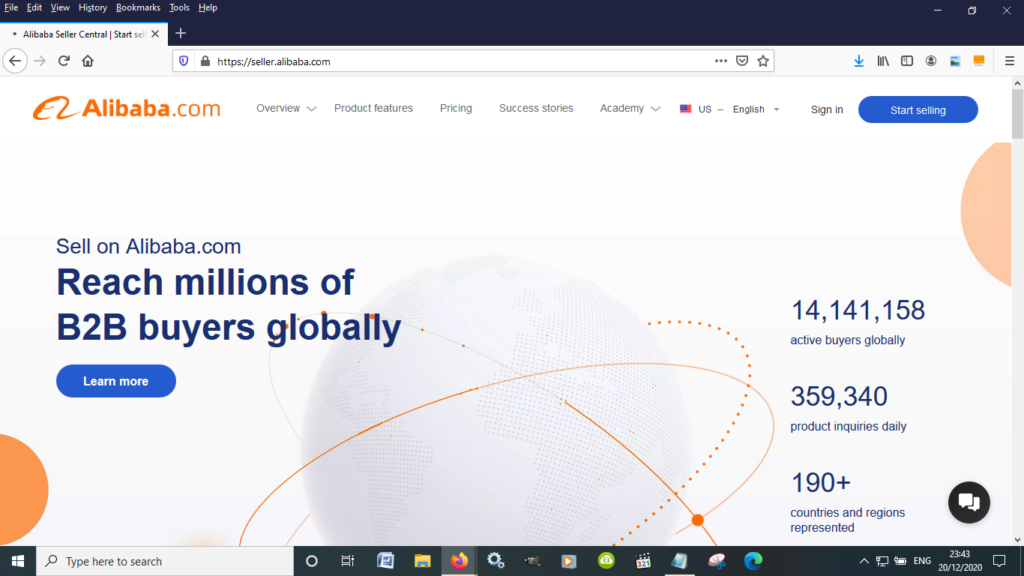
Alibaba is the biggest online marketplace in China
Alibaba commands up to 80% of the online market in China. So, they are a big player. The Alibaba option is great for those wish to sell internationally.
How to get started
One thing to note is that it can take you a long time to rise to the top if you are a new seller on Alibaba. So, you are going to need to be patient. There are some things that you will need to do to get started on the platform;
- First, you need to sign up for an account.
- Next, you will have to fill out details of your company’s profile.
- Finally, you list your products.
How much does it cost to sell on Alibaba?
Pricing on Alibaba is variable. It depends on the type of product that you are selling. You will also have to pay transaction fees. It’s possible to start selling on the platform for free. However, that gives you a number of limitations, including on the number of products that you can display. The free listing also restricts you in terms of the promotional tools available.
Who should sell on Alibaba?
Alibaba works best for wholesalers. Otherwise, you will be better off selling on Aliexpress, which is the retail arm of Alibaba.
5. Etsy
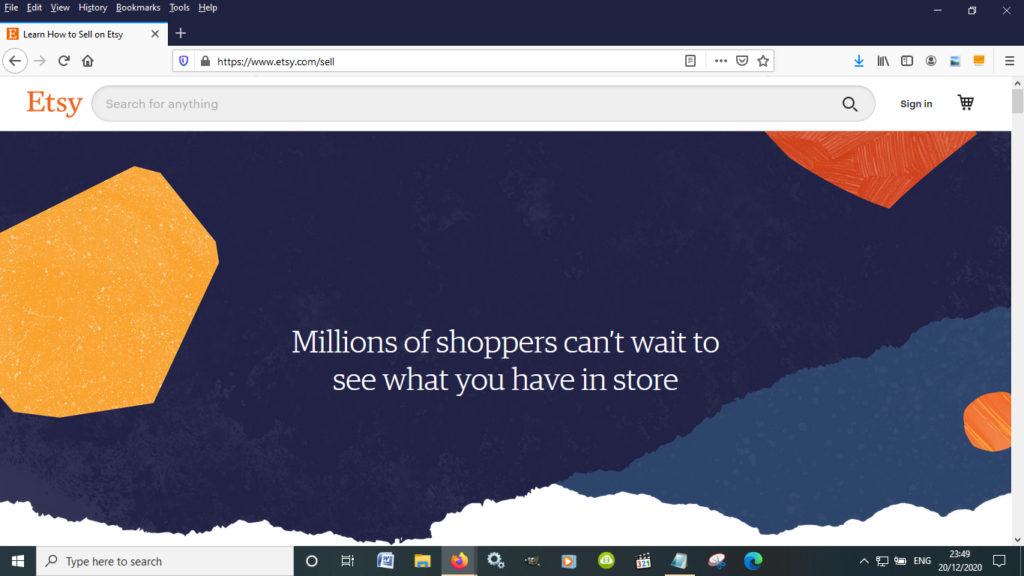
It’s is great for unique products
Etsy is another popular online marketplace. It’s not as big as Amazon or eBay, but it’s still big enough. At the moment, Etsy gets over 33 million shoppers per month. This particular marketplace is good for small sellers who specialize in unique products.
Who should sell on Etsy?
Etsy works best for the following groups of people;
- Artists
- Collectors
- Crafters
- Antique shops
- Vintage shops
How to get started
You can start selling on Etsy by taking the following steps;
- Create an account
- Set up your shop
- Create listings for your products
- Set up a payment method
- Set up a billing method
- Start selling
How much does it cost to sell on Etsy?
You are charged 20 cents for each product that you list on Etsy. You also pay transaction fees for each sale that you make. Also charged is a payment processing fee per sale.
6. Target
Like Walmart, Target is a good example of a bricks and mortar retailer that has made the transition to online sales. Its eCommerce side has been growing steadily over the past few years.
How to get started
You need to get in touch with Target if you are interested in becoming a target.com supplier. Talk to their merchandising team. Once you have gotten approval, you can set up an account. This option is probably not the best for small players. Target is good for well established businesses.
7. Rakuten
Rakuten is based in Japan. It’s a massive eCommerce platform and is ranked 4th across the world. So, this is a good bet if you wish to get exposure around the globe. If you are looking to take your business to an internal marketplace, then Rakuten is the option that you should consider. Rakuten charges a commission per sale that ranges between 8% and 15%.
How to start selling on Rakuten
The following is how to start selling on Rakuten;
- Apply to become a seller
- Upload products
- Start selling.
8. Newegg
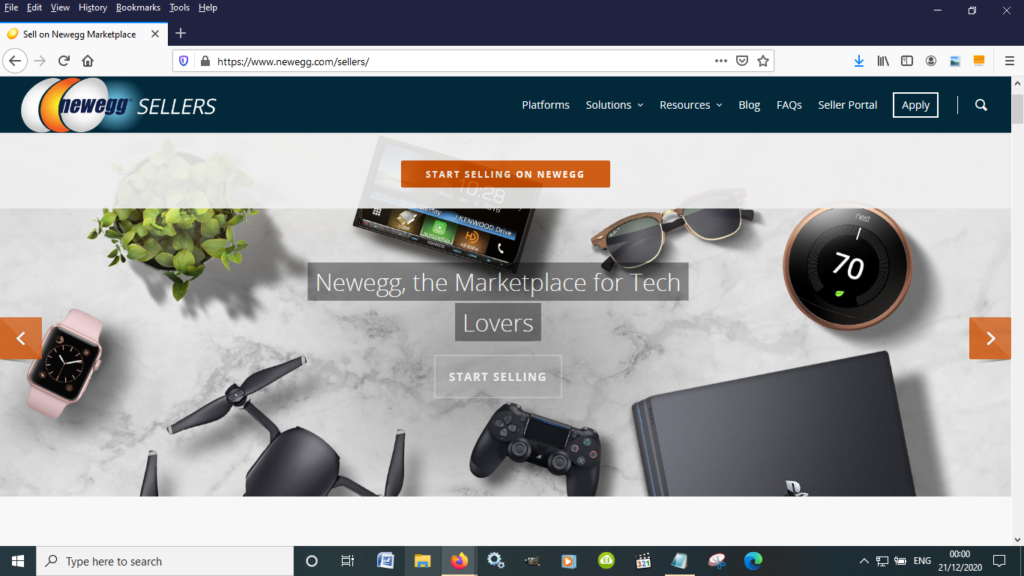
Newegg is great for tech products
Newegg is great for ecommerce businesses that specialize in tech related items. That’s what differentiates it from the other eCommerce marketplaces that we have been looking at here.
Newegg gets over 40 million visitors per year, making it an important marketplace that you can use to expand your business.
The platform has a Shipped by Newegg (SBN) feature that’s similar to Amazon’s FBA. If you choose this option, they will stock your goods in their warehouses, from where they will handle shipping to your customers.
How to become a seller on the platform
To become a seller on Newegg, you need to take the following steps;
- Fill out an application form
- Wait for approval
- List your products
- Start selling.
Fees
With Newegg, you get 3 different plans;
- The Standard plan: No fees (Up to 5,000 listings).
- The Professional plan: $29.95 per month. You get up to 10.000 listings.
- The Enterprise plan: $99.95 per month. You get an unlimited number of listings.
9. Chewy
This particular marketplace specializes in pet products. So, if you are into these, then you need to list your business on Chewy. In fact, Chewy even trumps big players like Amazon when it comes to sales for pet products. To get started on the platform, you need to send out an email to vendor@chewy.com.
10. Kroger
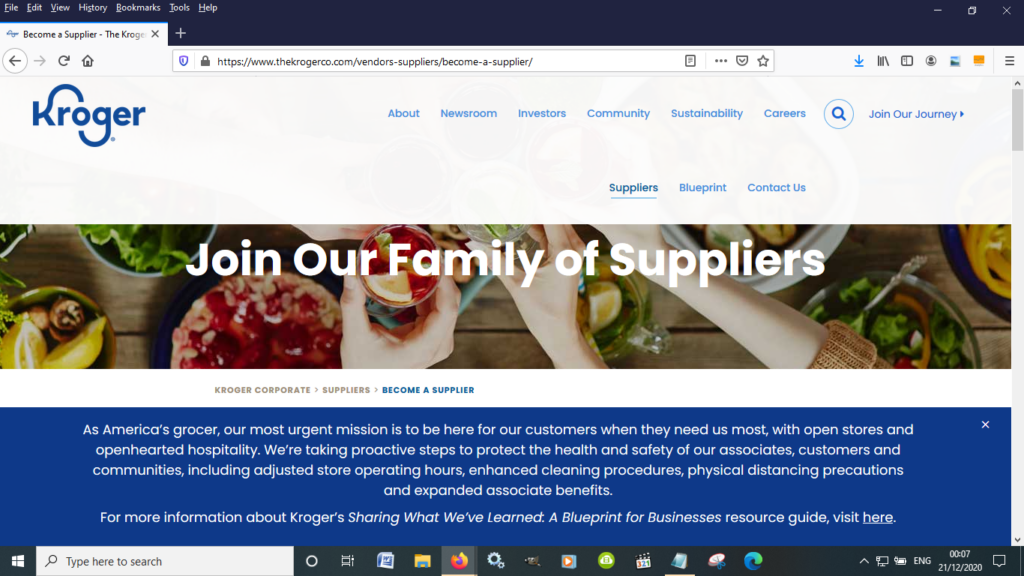
You need to apply to become a Kroger suppler
Kroger is a huge grocery chain in the United States. The company mostly has brick and mortar retail outlets. However, its eCommerce side has been growing, making it a great option for those looking to expand their businesses.
Getting started
To get started, you need to do the following;
- Apply to become a Kroger supplier through the company’s website.
- Once selected, you can start selling your products via Kroger.
Summary
Those are some of the best online marketplaces that can be found out there. How you choose the best option for you depends on where you are. It also depends on the nature of your business. The biggest players are Amazon and eBay. Other big players include Wal-Mart and Target. These are traditional stores that have transitioned to the world of eCommerce.

